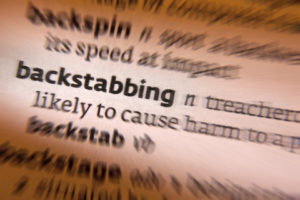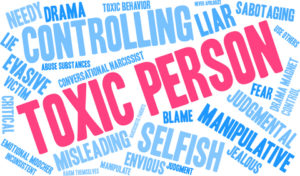
When you’re a target of bullying in school or at work, you can’t afford to put all your trust in anyone, not even those who seem to be your friends. I’m not suggesting you be completely paranoid, only nonchalant. Because in a toxic area, you will have a few nosy wolves in sheep’s clothing around you, who will try to get close to you for no other reason than to probe for intimate details about you and your life.
They will also study you like a lab-rat to see how you react to certain things and find out your opinions, especially opinions of your bullies and other people you go to school or work with. Why? So they can take the juicy deets and report back to your bullies with them.

Here are ways that you can pick up on your classmates or coworkers’ hidden attitudes and intentions.
1. Always observe the people around you – without looking like you’re watching, of course. Use your peripheral vision to scan them and your environment, and you’ll quickly pick up on the moods and sense the elephant in the room (if there is one).
2. Look for body language that isn’t congruent with words and context – Actions speak louder than words. If their body language isn’t congruent with words, background, or the situation and shows even a hint of hostility and discomfort when they’re around you, then “Houston, we have a problem.”

back-stabbing colleagues threatening an employee with scissors and knife
3. Watch for micro flashes – If you’re not careful, you’re likely to miss those tiny, split-second micro flashes of contempt people give without realizing it or when they think you aren’t aware of it. There are good actors; don’t get me wrong, but there are certain things the body gives away involuntarily, and if you look for it, you’ll see it.
When you’re around fake friends, sometimes, as you turn your back, you’ll see a tiny micro flash of contempt on their faces out of the corner of your eye. Then, you’ll get that nagging feeling in the pit of your gut. Don’t ignore that because you don’t only imagine things! Eighty-six, these creeps fast!
4. Notice the person’s feet – You can tell a lot by the feet! If the person is talking to you, facing you, but their feet are pointing away from you, that means they aren’t as “with you” as you think. Put some distance between you and that person.

5. Watch for crossed arms while talking to the person – If you’re having a conversation with the person and they cross their arms over their chest, that’s a dead giveaway! They’re exhibiting closed body language, and they’re closing themselves off to anything you have to say. It’s time to make an excuse to end the tete-a-tete and walk away. You don’t want this person around you.
6. Looking at you without blinking – if they do this, it’s a sure sign of contempt, or they’re trying to intimidate you. Either way, this person is not the person you want to be around.
7. Other signs to look for – a furrowed brow, one corner of the lip slightly raised, an icy, piercing stare, smiling at you with their mouth but not the eyes (no crinkles around the eyes). Any of these signs, you might want to distance yourself.

8. If they look at you, then look at each other when you walk away – again, you want nothing to do with these people.
9. Watch what you share– Very important! Don’t tell anyone anything they don’t need to know. Not even to those who seem friendly Don’t reveal information that’s better off private. Don’t badmouth anybody, especially the bullies, to anyone. They may smile in your face, but you can be sure they’ll report back to the bullies with anything you say and try to fan the flames.

10. Watch for eavesdroppers – If you have an innocent conversation with someone in the hall, be on the lookout for eavesdroppers. Don’t talk near corners or open doors. Many times people will listen in on your discussion, then report back to the bullies with it. Pay attention to people who walk by.
And if you see other people standing around while you’re speaking and those people aren’t a part of the conversation, take the discussion to a place more private.
With knowledge comes empowerment!
You know, it’s amazing how our body language can speak louder than any words we utter. The sad part is though, not everyone can read body languages. I wonder is that the innocence of them just taking people at their word or are they just clueless 😊?
Sadly I agree, Janice. I think it’s both, depending on the person. I also believe a third factor is probably at play- denial. But yesss, body language speaks much louder! But sadly, there are people, especially those on the autism spectrum, who don’t have the ability to read nonverbal communication. 😞😞😞
Hello my dear
Hello. 🙂
Nice to hearing from you my dear
Same to you. 🙂
thanks my dear
This one has the exact details, I have seen in so many bullies.
Thank you so much Shashi! 😊
The points you make are so true.
Thank you so much, Molly! ❤🌺🌷
I wish I knew this before.
A great information 😁 👏🏻👏🏻
Thank you so much! 😊